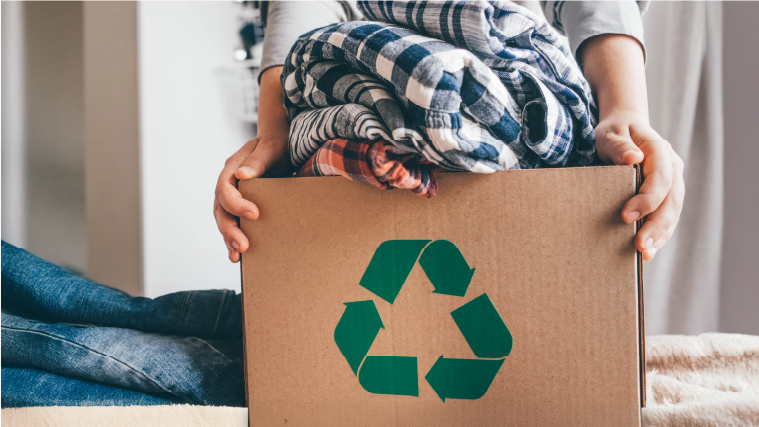Fast Fashion vs. Sustainable Fashion: Choosing a Future for the Planet
Oct 29, 2024

Textile waste is one of the most significant environmental threats, often overlooked in daily life. Every item of clothing we buy, wear, and throw away tells a long story—from resource-draining production to the ever-growing burden of waste on the planet.
In recent years, the rise of fast fashion has fueled rapid consumption and a surge in textile waste. Meanwhile, awareness is growing around sustainable fashion, a movement that seeks to bridge human needs with environmental preservation.
Let’s take a closer look at the environmental impact of textile waste and discover how sustainable fashion can pave the way toward a brighter, more sustainable future.
Fast Fashion: A Trend with Severe Environmental Impacts
Fast fashion has transformed the global clothing industry, making trendy apparel more accessible and affordable than ever. However, beneath this convenience lies a significant problem that is becoming harder to ignore: textile waste.
Every year, over 100 billion garments are produced globally to meet consumer demand. Shockingly, around 92 million tons of clothing are discarded, ending up in landfills. This equates to a truckload of clothing being thrown away every second on a global scale.
Beyond the physical waste, the fast fashion industry also carries a heavy environmental cost. Its resource-intensive production and reliance on global transportation contribute to about 10% of the world’s carbon emissions. If current consumption and production trends persist, these emissions could increase by 50% by 2030, worsening the already critical climate crisis.
In Indonesia, the textile industry is a cornerstone of economic growth. By 2024, the market is projected to be worth USD 13.83 billion, growing to USD 18.10 billion by 2029. This positions Indonesia as one of the top ten garment producers globally.
However, this success comes with environmental consequences. Indonesia generates approximately 2.3 million tons of textile waste each year, a figure expected to surge by 70% if left unaddressed. These discarded textiles overwhelm landfills, release hazardous chemicals into soil and water, and contribute to severe pollution. Notably, Indonesia ranks as the second-largest G20 country for water pollution from the textile industry.
The issue is further aggravated by the disposable nature of fast fashion. These garments, often made from low-quality materials to keep costs down, have short lifespans and are quickly discarded, perpetuating an unsustainable cycle of overconsumption and waste.
While fast fashion offers affordability and the latest trends, its environmental consequences are undeniable. Addressing this issue requires sustainable solutions, starting with a collective shift toward sustainable fashion as a more responsible and environmentally friendly alternative.
Sustainable Fashion: A Lasting Solution for the Planet’s Future
Amidst growing environmental challenges, sustainable fashion offers an innovative approach within the fashion industry, aiming to reduce its negative impact on the planet while providing broader social benefits. This concept emphasizes eco-friendly clothing production and mindful consumption, ensuring the well-being of people and the preservation of nature.
The sustainable fashion approach spans the entire supply chain—from using eco-conscious materials like natural fibers or recycled fabrics to adopting production processes that minimize energy and water usage. It also highlights the importance of fair labor practices, ensuring that workers in the industry receive fair wages and work in safe environments.
Beyond production, sustainable fashion encourages consumer awareness through initiatives like promoting thoughtful shopping habits and managing secondhand clothing to reduce waste. By embedding sustainability into every aspect, this approach presents a holistic solution to the environmental and social issues facing the fashion industry.
Key
Features of Sustainable Fashion:
- Cruelty-free: Avoids the use
of animal-based materials.
- Natural dyes: Uses
environmentally friendly dyes instead of harmful chemicals.
- Recycled materials: Utilizes
fabrics made from textile waste.
- Resource conservation: Reduces
the use of water, energy, and chemicals.
How to Incorporate Sustainable Fashion into Everyday Life:
Everyone can play a part in minimizing textile waste by embracing sustainable fashion. Here are some simple ways to get started:
- Donate old clothes:
Instead of discarding unwanted garments, donate them to organizations or
recycling partners that turn used clothes into new, eco-friendly materials.
- Invest in quality:
Choose high-quality, durable clothing to minimize the need for frequent
replacements.
- Upcycle creatively:
Repurpose old clothing into new items like tote bags, cushion covers, or unique
accessories.
- Shop secondhand:
Visit thrift stores or exchange clothes with friends to reduce the demand for
new clothing.
- Support sustainable local
brands: Opt for brands that prioritize recycling,
ethical practices, and eco-conscious production.
- Take care of your clothes:
Follow care instructions and store garments properly to extend their lifespan.
Sustainable fashion is not just a passing trend—it is a collective responsibility to safeguard the planet, one that should become an integral part of modern lifestyles. By choosing sustainable options, we can cut down on textile waste, reduce carbon emissions, and encourage fairer, more ethical industry practices.
Small actions, like opting for durable clothes, recycling textiles, or supporting eco-friendly local brands, can collectively create a significant impact. A more sustainable future begins with the choices we make today—start now for a greener tomorrow.
Latest Article
_(1)_(1)1.jpg)
_(1)_(1)1.jpg)
1.jpg)